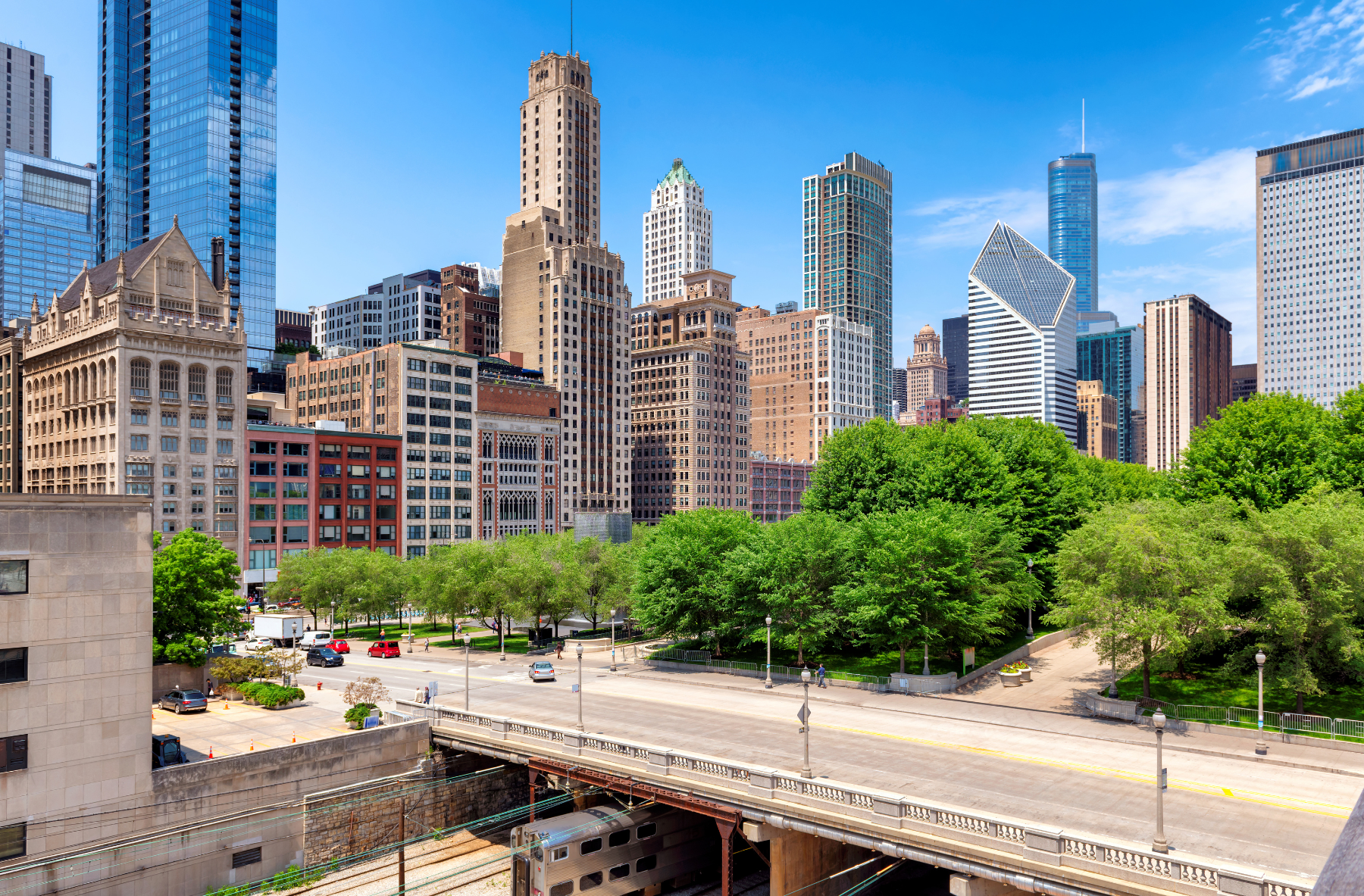
Maxwell Street: Chicago’s Original Market
Published on August 29, 2024
If you’re going to Maxwell Street, either for the revived market or to visit the University of Illinois-Chicago Circle Campus, head to Pilsen and take our Frida & Friends: Food & Art walking tour of the neighborhood.
By Dave Lifton (@daveeatschicago)
Originally running from the Chicago River to Blue Island Ave., Maxwell St. started appearing on maps in the late 1840s. It was named for Dr. Philip Maxwell, an Army physician who served during the last years of Fort Dearborn and became a prominent surgeon in the fledgling city.
The Near West Side quickly grew with German and Italian immigrants and those displaced by the Great Chicago Fire. In the 1880s, Jews fleeing Eastern Europe and Russia began settling in Chicago, and Maxwell St. became the center of Chicago’s Jewish community. Before long, kosher butchers, tailors, and shops lined the street, and the Jews also installed their tradition of selling produce and dry goods from tables and pushcarts on the sidewalks.
In 1912, the city officially established the Maxwell Street Market. The operations were overseen by the Market Master, whose job included collecting fees, arranging security and sanitation, and settling disputes between vendors. It eventually expanded beyond Maxwell St. to include Halsted St. from Roosevelt Rd. to 16th St.
The open-air market catered primarily to the blue-collar Near West Side—but also the entire population at-large—by offering new and used merchandise at lower prices than could be found at the fancier downtown stores. Shoppers could find anything from high-quality clothes at Gabel’s to loose, random everyday items. And, unlike Marshall Field’s and Carson Pirie Scott at the time, the Maxwell Street Market was open on Sundays, when the market was closed to traffic.
The market provided a steady flow of foot traffic for the shopkeepers, but for the street vendors, it was an entry towards entrepreneurship. Ron Popeil of Ronco fame got his start as a pitchman on Maxwell Street. The phrases he developed—such as “But wait, there’s more” and “Now how much would you pay”—would enter the national consciousness when he later sold his kitchen gadgets on television commercials.
It was a feast for the senses: the sight of up to 50,000 people at the tables and racks and dodging ‘pullers’, who literally grabbed your arm to draw you into their stores; the aroma of grilled onions for Polish sausages and bone-in pork chop sandwiches filling your nostrils; and perhaps most of all, the sounds of street musicians.
From the earliest days of the Great Migration, Black blues artists arriving in Chicago started busking there to take advantage of the large crowds. In 1925, Papa Charlie Jackson’s “Maxwell Street Blues” described the scene: “Lord, I’m talkin’ ‘bout the wagon, talkin’ ‘bout the pushcart too/’Cause Maxwell Street’s so crowded on a Sunday, you can hardly pass through.”
But the musicians had trouble being heard over the din. Shopkeepers helped them out by running extension cords to power amplifiers and microphones, giving birth to the electrified blues that would become identified with Chicago. One musician, Little Walter, even recorded his first sides in the back room of the Maxwell Radio & Records shop in 1947. He would soon join Muddy Waters’ band and redefine the sound of blues harmonica as a sideman and frontman.
By the mid-1950s, the area had seen most of its White residents leave as Black and Latino families moved in. Mayor Richard J. Daley built the Dan Ryan Expressway, which cut off Maxwell St. east of Canal St., and cleared out most of Little Italy to build the University of Illinois Chicago campus, which opened in 1965.
He then set his sights south of Roosevelt Rd. to kill off the market. Changes to the City Code in 1975 eliminated the Market Master position and placed it under the control of the City Council, who raised fees, cut services, and allowed it to deteriorate beyond repair. But during this time, it had arguably its greatest moment in the national spotlight in The Blues Brothers, with John Lee Hooker singing “Boom Boom” on the street and Nate’s Deli transformed into the Soul Food Café, where Aretha Franklin performed “Think.”
It took a few decades, but Richard M. Daley finished off his father’s work by moving the market to Canal St. on Aug. 28th, 1994 and selling the land to UIC for $4.25 million. The intersection of Maxwell and Halsted is now the heart of University Village, a sparkling neighborhood of apartments and restaurants geared towards students. There are signs describing the significance of the market to Chicago history and statues depicting a produce vendor, shopper, and bluesman, but there are also signs that say “No Peddling”.
The market was eventually relocated to Desplaines St. and Polk St. In 2024, the city honored the heritage of Maxwell Street by moving the market back to its original home on the last Sunday of the month through October.

The Adventure starts when you say it does.
All eATLAS Adventures are designed and built by experienced eATLAS Whoa!Guides. They're always on. Always entertaining. And always ready to go.
Check out our Adventures!